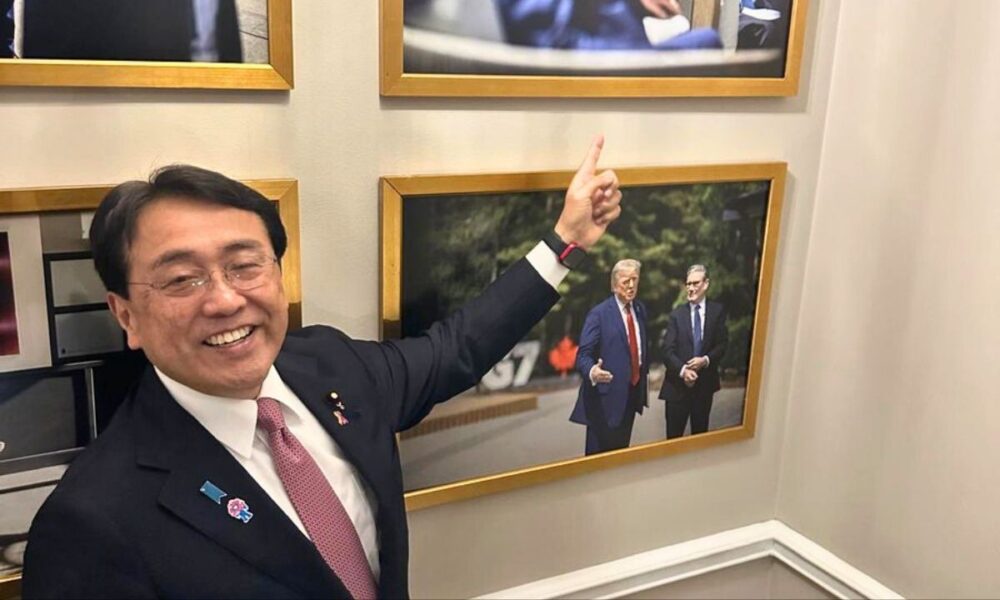A new trade agreement between the United States and Japan lowers tariffs on Japanese auto imports to 15% from 27.5% and reduces duties on other goods from 25% to 15%, averting steeper levies set to take effect August 1.
The deal, described by U.S. President Donald Trump on Tuesday as a significant step for trade, includes Japan’s commitment to invest $550 billion in the U.S., with “90% of the Profits” benefiting the U.S., though specifics on the investment remain unclear.
“Japan will open their Country to Trade including Cars and Trucks, Rice and certain other Agricultural Products and other things,” Trump announced on Truth Social, adding that the deal includes “reciprocal tariffs” of 15%.
Japan’s top tariff negotiator, Ryosei Akazawa, appeared to confirm the agreement in a post on X featuring an image from his White House visit Tuesday.
The agreement, the most significant trade pact under Trump’s administration to date, sets a potential benchmark for ongoing negotiations with other economies, including the European Union and China, which face August deadlines for tariff adjustments. Economists suggest the 15% tariff level is manageable compared to the uncertainty that has disrupted investment planning, Reuters reported.
“While a negative from a macro point of view, the world can live with 15% or so tariffs,” said Mohit Kumar, an economist at Jefferies, noting that global average tariffs have risen to about 17% since Trump’s “Liberation Day” announcement on April 2.
Financial markets reacted positively, with Japan’s Nikkei index rising 3.5% and European automakers, including Volvo Car, Porsche, BMW, Mercedes-Benz, and Volkswagen, gaining 4% to 10% on optimism for workable trade deals. U.S.-listed shares of Japanese automakers Toyota and Honda also surged.
“This more positive trade news has really helped to ease investor fears that tariffs are about to snap back higher on August 1,” said Jim Reid of Deutsche Bank, per Reuters.
However, he cautioned that higher tariffs, such as 30% on the EU, 35% on Canada, and 50% on Brazil, remain a threat.
The deal raises pressure on the EU, which faces a potential 30% tariff by August 1, and China, which could see tariffs rise to 145% by August 12 without an agreement.
“It looks like the benchmark for major economies is going to be 10-15% and a somewhat higher level for smaller economies,” said Derek Halpenny, head of research at MUFG in London, Reuters reported.
Not all reactions were positive.
Matt Blunt, president of the American Automotive Policy Council, representing General Motors, Ford, and Stellantis, criticized the deal, stating, per Reuters, that any “deal that charges a lower tariff for Japanese imports with virtually no U.S. content than the tariff imposed on North American-built vehicles with high U.S. content is a bad deal for U.S. industry and US auto workers.”
The agreement follows other recent U.S. trade pacts, including deals with the Philippines and Indonesia that set 19% tariffs.
Trump also hinted at a forthcoming U.S.-Japan partnership on a gas pipeline in Alaska, saying, “They’re all set to make that deal now.”
With U.S. goods imports from Japan totaling $148 billion last year, the 15% tariff is expected to generate $22 billion annually, nearly a third of U.S. tariff revenue for the last fiscal year.


